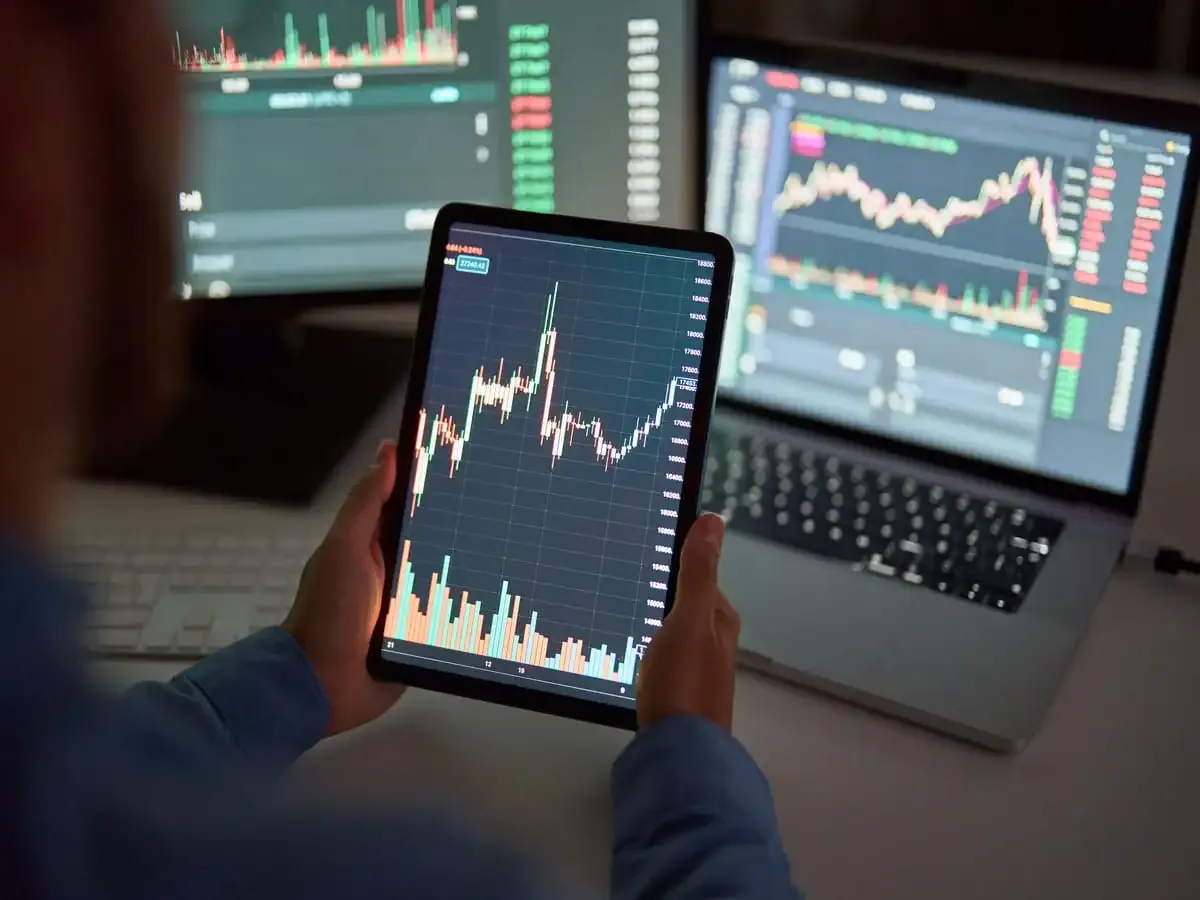Risk management in intraday trading
Written by Upstox Desk
Published on July 31, 2025 | 7 min read

Intraday trading comes with a high degree of risk compared to long term investments or even short term trades. As opposed to long term investments, any new market development could cause wild price swings in addition to the inherent volatility of the stock. To be profitable as a day trader in the brutal intraday market, one has to be adept at risk management.
Key Points
- Intraday trading comes with a high degree of risk compared to long term investments or even short term trades.
- Stocks fluctuate within price ranges, with the lower point of a price range called a Support and the ceiling, a resistance.
- A stop loss is a price at which you sell your shares to avoid further loss. This should be fixed at a price below the support at which further loss is likely. Similarly, one should also choose a price to sell at a profit, in market lingo, take profit. This is usually set near a resistance.
- Expected return is calculated as (probability of take profit* profit at that price) - (probability of stop loss* loss at that price). Compare the expected return across stocks and choose the stocks that have the highest expected return values.
- Seasoned traders advice an exposure of just 1-2 times the money held by a trader in a trade.
Intraday trading
Intraday trading refers to trades that are squared off in a single market session. In other words, shares bought are sold before the market comes to a close. Brokerages offer margins to trade, that is, part of the money you need to buy shares is provided by the brokerage. This enables one to trade higher volumes of shares and is called leverage. It is usually expressed as a ratio.
For example, if a brokerage offers 4:1 leverage, it means that for every one part of your money, the brokerage pays four parts. Thus, one needs to contribute just 20% of the share price to buy one share. All Intraday positions have to be closed before 3:10 pm. More important things to know while investing in intraday trading here. If not, brokerages either add the shares to your demat account after deducting money due to them, or if your account doesn't have sufficient balance, auto square off (sell at market price and reclaim their contribution).
Risk management in intraday trading
For trade to not be a wild gamble, a trader must know how to minimise risks. While traders don't have control over making profits, every trader can cut losses by formulating an intraday strategy to be followed beforehand. Without a plan, people make emotional decisions in the face of adverse developments, leading to more disaster. Therefore, one has to know what shares to trade, how much to buy and when to sell before starting. In a domain fraught with risk, only those who take effective measures against risk can survive.
Risk management techniques
Determine support and resistance
Technical analysis should be used to determine which stocks to buy. Stocks fluctuate within price ranges, with the lower point of a price range called a support and the ceiling, a resistance. These price ranges and price points can be determined by observation of historical price movements, using tools such as moving averages (average of a number of previous closing day prices) or the fibonacci retracement tool or by connecting price peaks and troughs on a chart to determine resistance and support.
A share usually tends to rise near its support price and if it's near its resistance price, usually tends to drop in value. But this is not always the case as new market developments can affect the fortunes of stocks greatly. Stocks can go up beyond resistances or slip under multiple supports to settle into new price ranges. There can even be manipulation of share prices by deep pocketed traders, especially if the traded share is not so liquid.
Choose exit points
Once you've bought a share, you must know when to sell and get out. A stop loss is a price at which you sell your shares to avoid further loss. This should be fixed at a price below the support at which further loss is likely. Similarly, one should also choose a price to sell at a profit, in market lingo, take profit. This is usually set near a resistance.
These price points are not cast in stone. Based on an assessment of prevailing market conditions and temperament (bullish or bearish trend), one can set stop loss and book profit prices. For example, in case of a volatile stock, the targets should be set wide apart whereas a more stable stock might warrant tight targets. But these prices should be realistic with a reasonable probability of realisation. Setting a stop loss or book profit price way off from the stock price with little probability of realisation is futile.
Expected return
One has to be constantly vigilant while trading and factor in every development to make the right decisions. The strategy has to be dynamic and accommodative.
Amount to buy
While it is tempting to use up leverage while trading, it's very unwise to do so. Seasoned traders advice an exposure of just 1-2 times the money held by a trader in a trade. This way, losses can be minimised. If one is pretty sure about the prospects of a trade though, higher volumes can be bought and sold.
The leverage multiplier factor would have its impact both on profits and losses.
In trading, there can be four outcomes - big wins, small wins, small losses and big losses. The aim is not to eliminate risk entirely but visualize. Eliminating risk from a situation is beyond human control. However, visualizing the worst case scenario and practically analyzing whether you can handle a big loss is the key. Can you handle it if you incur a big loss? That’s your answer to risk management.
Tips for risk management
- Trade in highly liquid stocks, usually large cap stocks, as this will facilitate easy buying and selling. Large cap stocks might also be less volatile due to the high volume of trade.
- Always do your homework before trading and set stop loss/take profit prices, calculate expected return, amount to trade etc.
- The price at which you've bought the shares shouldn't be set as the stop loss price. Some do this to eliminate the risk of incurring a loss, but often, large institutional traders manipulate stock prices to reach stop loss prices set at buying prices before value increases again.
- Don't use a fixed distance stop loss and take profit price for every stock. For example, a stop loss that you always set ten points away from the buying price. Don't set performance targets. It only makes you anxious and forces you to make mistakes.
- Modify exposure based on probability of profiting from a trade. A 1-2% exposure is usually advised. Don't use up leverage.
- Look back at past trades and learn from your mistakes.
Wrapping up
- Intraday trading is much more risky than long term investments
- Have a strategy in hand before trading
- Choose stocks based on expected return values
- Set stop loss and take profit prices
- Trade with only a fractional amount of your money
About Author
Upstox Desk
Upstox Desk
Team of expert writers dedicated to providing insightful and comprehensive coverage on stock markets, economic trends, commodities, business developments, and personal finance. With a passion for delivering valuable information, the team strives to keep readers informed about the latest trends and developments in the financial world.
Read more from UpstoxUpstox is a leading Indian financial services company that offers online trading and investment services in stocks, commodities, currencies, mutual funds, and more. Founded in 2009 and headquartered in Mumbai, Upstox is backed by prominent investors including Ratan Tata, Tiger Global, and Kalaari Capital. It operates under RKSV Securities and is registered with SEBI, NSE, BSE, and other regulatory bodies, ensuring secure and compliant trading experiences.



















